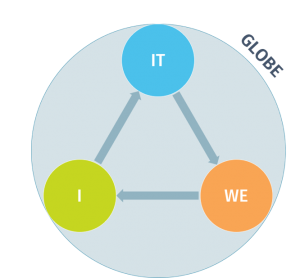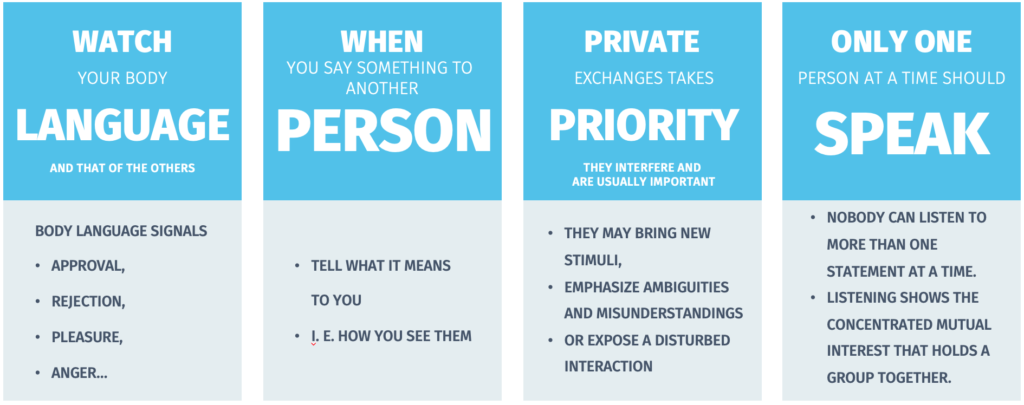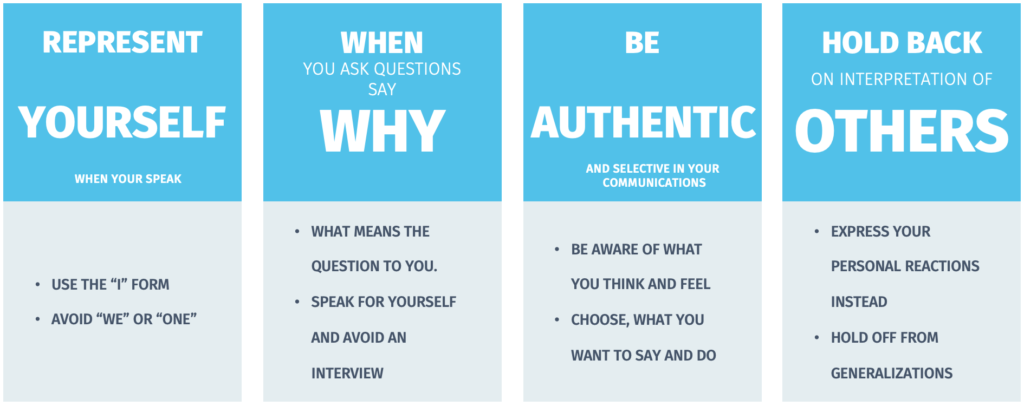Methodology in regard to the concept of Transition Management
Introduction
The intention is to eventually phase out the development of the frames for the client-centred educational concept, in which strategic, quality controlling, organizational and social-cultural problems must be discussed. All requirements which need to be discussed in relation to the dimensions compensation (to help existing NEET’s), prevention (to take the initiative so that the society will not „produce“ any further NEET’s) and structure (overall co-operation to ensure the structural success of the aforementioned dimensions) rank among the rubric strategic problems. All dimensions cannot be distinguished accurately.
In this phase just some descriptions of the concept of Transition Management, only to achieve at the end a workable definition. The descriptions are random and brought together from various sources:
“A transition is a structural social change and the result of interacting and mutually reinforcing developments in the fields of economy, culture, technology, institutions and nature and the environment. For effecting transitions many coherent ’system innovations‘ are required: innovations at the level of technologies, but also rules and organization.” (Wikipedia)
“Transition management aims to deal with persistent societal problems through combining long-term envisioning, short-term experiments in a selective participatory process that supports policy integration, social learning and social innovation. It focuses on frontrunners, entrepreneurs, niche-actors and innovative individuals and organizations in general that are committed to sustainable development.” (D.A. Loorbach)
„Change of organizations primarily requires changing yourself. Your organization is in transition. The choice of this change in the organization is already made and you will be expected to go along with this transition and here to give colour. Where should you start? Do you need to broaden your thinking patterns? Should you change your (un)conscious behavior? Is your goal already clear or do you struggle with the path to this goal? Are you able to be the example for others to make this transition a success?“ (School of Management)
“Transition management is aiming at promoting and stimulating social innovation towards a sustainable society. This is based on the notion that this is not compelling and top-down, but rather subtle and co-evolutionary through a visionary process of scheduling, learning, instrumentation and experimentation. The concept of transition management often evokes the association of control and management. However, this is a misconception. Transition management takes complexity and uncertainty as a starting point and assumes a limited degree of control of social dynamics.” (Jan Rotmans. Erasmus University Rotterdam, the Netherlands)
A transition process as described above is difficult to start and implement and must not be compelling and top-down.
Transition Phases
Phase 1. Urgency. People will only really start to move if they have to. This can be a necessity: it must be done, because we cannot do otherwise, or ambition: we have to, because we do not want to be different.
Phase 2. Letting go. As soon as people are convinced that there is no escaping, that something is really going to change, they come into the ‘letting go’ phase. There they get a view of what is about to be lost, where they have to say goodbye. This can concern concrete issues such as an old system, the old workplace or colleagues, but it can also be about organizational values, forms of cooperation or products.
Phase 3. Not knowing. In this phase the old situation is no longer there and the new situation is not there yet. Here, people experience the no man’s land in which there are no new routines yet, where they need external navigation and sometimes lose the most basic skills. People get completely lost in this, sometimes they are in a state of panic.
Phase 4. Creation. After ‘not knowing’ comes the phase of ‘creation’. That is the phase in which experimenting is being tried out. Proof balloons are made to go, new connections are made. There is a lot of hope and positive energy in this phase.
Phase 5. New start. After the ‘creation’ the ‘new beginning’ follows, the phase in which a feeling is created of the new identity: that’s how it feels, that’s how it smells, that’s how it sounds to be at home in the new situation. There are new routines and people experience pride.
As you can see all phases are necessary for a meaningful change. Each transition phase has its own indispensable contribution to the change from A to B. If you manage to see and acknowledge that contribution, you can go to B. more easily and quickly.
In every change, in every organization these phases are the same. To get a successful transition, an organization has to go through all phases. The colour of these phases, and the way you have to manage the phases, is different in every organization. This is determined by the dynamics of the organization (the history and the patterns in the organization). Without intervening in that dynamic, there will be no change.
Finally, the transition is influenced by factors from the context. The change has consequences for the context; the context influences the change. For a successful transition there must therefore be an interaction with the context in which the organization operates.
Behavior during the transition can not only be read as an expression of the different phases of transition, but also as an expression of the patterns of the organization. Particularly in the ‘not knowing phase’ the dynamics of the organization play an extra role: the weak spot of the organization is getting much worse here. That is the normal, and thus predictable, reaction of the system to change. Resistance to change therefore provides you with an incredible amount of information about the dynamics in the organization, and therefore leads to intervene. If an organisation wants to keep a grip on the Transitions they want to develop, it is necessary to analyse the developments continuously, for embedding a project like INTENSE in the organization it must be done properly, otherwise the project is doomed to fail.
Transition is a process in which not only the structures change, but also and especially the people. And only if the people change Transition is possible.
sources:
https://www.praxisframework.org/en/knowledge/change-management
Govender, V., & Rampersad, R. (2016). Change management in the higher education landscape: A case of the transition process at a South African university. Risk governance & control: financial markets & institutions, 6(1), 43-51. http://dx.doi.org/10.22495/rgcv6i1art5
To help an organisation and the teams with this process we introduce Theme Centred Inaction and we discussed the communication square (4 sides of a message).
Theme Centred Interaction
One important principle that is worth to follow in context of transition management in organisations is the TCI. Watch the following presentation!
Video-Link: https://youtu.be/Ej5xFMpvkwk
TCI is a concept for
- Working with groups and teams
- especially for counselling and coaching clients but also
- directing institutions and their employees
The goal of TCI is to facilitate the interaction between tasks and individuals in order to encourage the development of factual, social and self-competence.
It is appropriate for all areas in which people need to work together successfully in all kinds of teams and groups. TCI is in particular helpful for people, who desire to use it to re-structure their personal lives. Therefor TCI is one of the most widely used methods in the areas of Humanistic Psychology and of Education.
Why should a coach or a director make use of TCI?
- the trainer is able to observe and reflect group processes from a meta level point of view
- the concept is designed to take care of the individuality
- using the concept allows to gain the performance and more efficiency
- and the concept delivers the coach the structure to reflect group conflicts and their backgrounds

Every group is defined by four factors: I (the individual), WE (the group interaction), IT (the task) and the GLOBE (context).
The triangle itself is placed in a circle, symbolizing the GLOBE, that is the
- organizational,
- physical,
- structural,
- social,
- political,
- ecological surroundings,
in a narrow and wider sense, which condition and influence the teamwork of the group, and which in turn are influenced by the work of the group. The globe can create disturbances and it can upset dynamical balance, shifting weight to one corner of the triangle. Thus, one must always be conscious of the globe and the constraints it produces and take it into account
Appreciation and support of equilibrium among the I-We-It-factors in context represents the basis of the TCI group work.
The task of the coach or leader is to pay attention to the dynamic balance among the four factors. The term dynamic means that balance is not static like a scale, but, similar to a bicycle, a part of the process.
The theme formulates the common task and the goal of the group work.
It ought to address the participants holistically, recognize where they are in their development, in order to take the next step. The WE of the group develops from centering on a theme, that is why TCI is termed theme-centred.
Finally, the theme on which the group is working is influenced by all four factors, not only by IT. This point is specific to TCI.
The leader considers himself to be part of the system. Thus, he is both participant and leader. As participant, he acts as a model according to the postulates, and he selectively and authentically adds his thoughts and feelings. As leader he senses, formulates and presents themes that will help the group process. He suggests possible structures and makes sure that they are maintained. He observes the balance among I, We, Theme and Globe.
The postulates arise from the request to recognize reality, not dogma, as an authority.
- Be aware of your own internal and external situation and make decisions responsibly taking both the other person and yourself into account. In short: be your own “chairperson!”
- Disturbances and passionate involvements take precedence. Look at them as a chance, and regard them as a sign of something that has been over-looked or repressed.
- Be responsible for what you do and do not do – in your personal life and in society.
The postulates also arise from values and the view of mankind who are formulated in the following axioms
- The individual is a psycho-biological unity. He is also part of the universe and is therefore both autonomous and interdependent. A person’s autonomy increases the more he becomes aware of his interdependence with everyone and everything.
- All living entities and their growth and decline deserve to be respected. Respect for that which grows is the basis for all evaluating decisions. The humane is valuable; the inhumane is a threat to what is valuable.
- Making free decisions happens within provisory internal and external boundaries. It is possible to extend these boundaries.
Auxiliary rules are instructions for realizing the postulates that are based upon the axioms:


“Auxiliary rules help, when they help and are not meant to be enforced as laws” Ruth Cohn.
Source: https://en.wikipedia.org/wiki/Theme-centered_interaction
This work is licensed under a Creative Commons Attribution-ShareAlike 4.0 International License
![]()
 The European Commission support for the production of this publication does not constitute an endorsement of the contents which reflects the views only of the authors, and the Commission cannot be held responsible for any use which may be made of the information contained therein.
The European Commission support for the production of this publication does not constitute an endorsement of the contents which reflects the views only of the authors, and the Commission cannot be held responsible for any use which may be made of the information contained therein.
